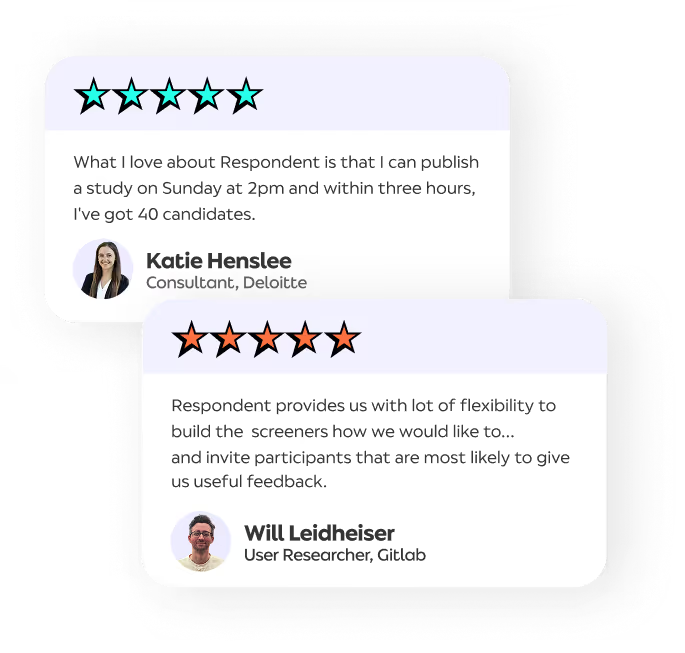Complete the form and pick a time that works for you. Our team will review your research needs and guide you to the best approach.

Eric Mahlstedt is the kind of executive who sees things differently. “I consider it a privilege to think about people as the inputs and outputs of the company,” he says.
His innovative approach has transformed IBM Cloud, Data, and AI research into the sophisticated growth engine it is today. While legacy enterprise organizations conduct design research as a development phase exercise, Eric’s B2B research team is integrated with the product management function itself, through the long tail of the product lifecycle.
They didn’t get there by following the status quo.
Recruiting technical professionals for research studies was once “a struggle,” Eric says. A robotics process automation developer who’s been using an out-of-the-box solution for at least one year? How about 10 a month?
The significant resources required to find niche participants made dropout rates even more painful. “The longer it takes to set up your study, the longer it takes to get your findings and recommendations to the product team,” says Eric.
Eric, an experienced research expert, understood the limitations of traditional research recruiting for an incumbent like IBM: “Our competitors would eat our lunch.” His vision of a modern research operation would require higher agility, and less risk.
Respondent’s cloud-based enterprise research platform was the natural solution for a cloud-based enterprise like IBM. Eric tested Respondent and similar solutions before scaling it to his team.
Ultimately, he stuck with Respondent for B2B research interviews for three reasons:
Eric, an experienced research expert, understood the limitations of traditional research recruiting for an incumbent like IBM: “Our competitors would eat our lunch.” His vision of a modern research operation would require higher agility, and less risk.
Eric’s team, and their product management peers, are delivering greater value to IBM and IBM’s customers with Respondent.
“Our executives are looking at product health funnel metrics like NPS, monthly recurring revenue, and conversion,” Eric says. “When they see underperforming trends, they want to know why. I love that we can answer them.”
IBM product teams get the benefit of qualitative user feedback throughout the entire product lifecycle. IBM researchers on more than 30 teams use the Respondent platform to derive insight beyond the traditional usability use case, like market opportunity sizing and segmentation.
Eric’s initial team has grown from five researchers to over 80 in the last five years, doubling staff on a yearly basis since 2016.
“Accelerating organizational growth requires resource ownership and a clear operating model,” says Eric. “Most user researchers execute studies that help optimize design quality at the expense of delivery speed. Leveraging services like Respondent can increase efficiency so researchers can focus on their real job after delivering findings and recommendations. This requires political capital to pass the benefit of their work all the way downstream to end users through the actions and commitment of their stakeholders. At that point we learn that products don’t succeed or fail, people do.”
“A good screener can get you access to customers within two to three days,” says Priya. Below, she and Eric share their success tips.
Screening for Quality
Filling Niche Studies
Conducting Interviews
Get on-demand access to a reliable, high-quality panel of 4m participants. Find your first qualified research participant in just 15 minutes.
